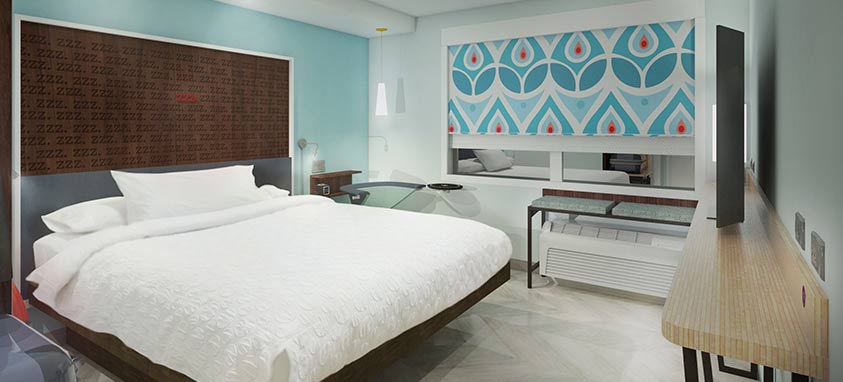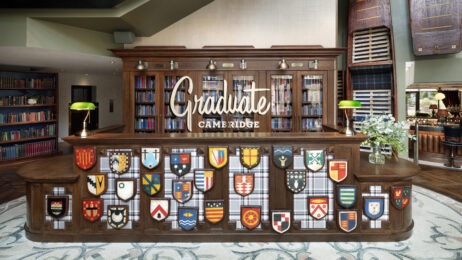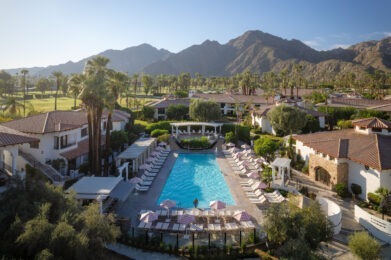Rendering of Hilton Tru guest room
An interesting trend has been cropping up in hotels around the country, and it has some business travelers in an uproar. According to a new Associated Press report, several top hotel chains have quietly been eliminating desks from their rooms and replacing them with flexible workspaces such as laptop trays and multipurpose surfaces such as shelves, tables and even headboards.
The shift away from dedicated work spaces is part of a bid to win over millennials, which consultants believe prefer to work in more casual, flexible spaces. Hotels are working hard to capture this age group by doing hip, modern redesigns or launching new younger-skewing brands, as Hilton and Best Western have recently done.
In December, Marriott announced a chainwide redesign that involves removing desks from rooms in most of the company’s properties and replacing them with tables. Kimpton hotels’ recently redesigned rooms are equipped with sofas and coffee tables, but have no desks in sight. Hilton’s new Tru brand is replacing desks with chairs that incorporate laptop trays, while Best Western’s Vib uses headboards that double as desks. The goal is to create a more modern vibe that draws in a younger crowd. But is this change actually alienating other travelers?
These redesigns offer modern travelers greater flexibility to work wherever they want, whether they’re sitting in bed with a laptop, lounging on the couch with an iPad or working in one of the hotel’s communal spaces. However, this shift is leaving some business travelers out in the cold. Frequent-flyer forums have compiled lists of deskless hotel properties to avoid. Blog posts pleading for the return of the desk—and arguing that some millennials actually prefer desks—have gone viral.
In spite of a few vocal complaints, hotels are sticking with their new strategy. In some cases, these redesigns do even more than give the customers what they want. They also bring in major cost savings. Eliminating things such as desks and closets can save tens of thousands of dollars in each room’s construction costs. Best Western CEO David Kong told AP, “They are more concerned about the (construction) cost, because they don’t have enough time to make that up if we hit a downturn.” It should come as no surprise that Hilton’s Tru will cost just $84,000 per room to build, compared to its Hampton Inn brand, which comes in at $110,000 per room. All in all, this seems like a win for hotels.




